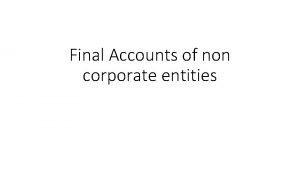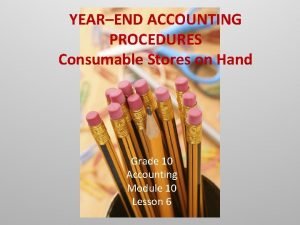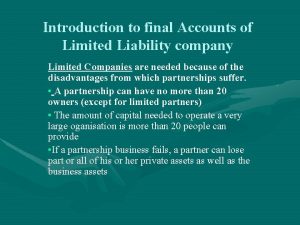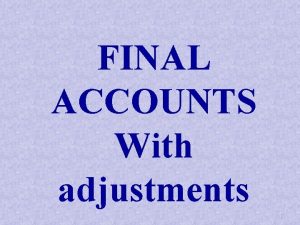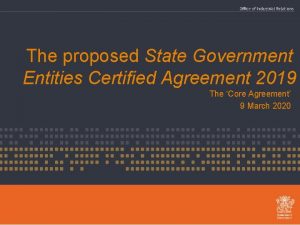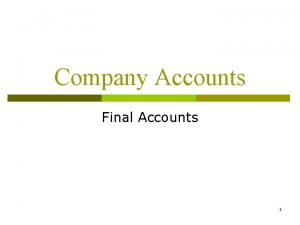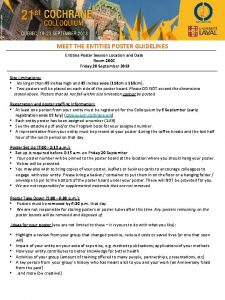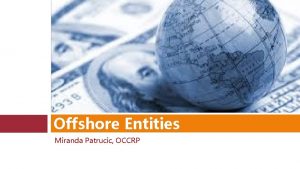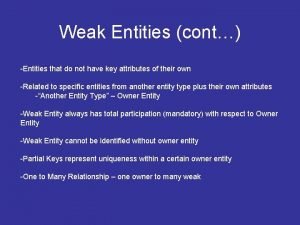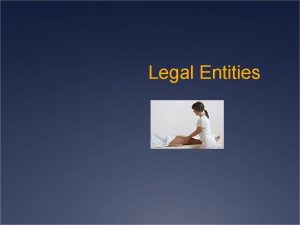Final Accounts of non corporate entities Final accounts








- Slides: 8

Final Accounts of non corporate entities

Final accounts of non trading concern: • Final Accounts are prepared at the end of every year to know the income and expenditure during a year and position of assets and liabilities • It consist of q. Receipts and payments account q. Income and expenditure account q. Balance sheet

Receipts and payments account • It is a summary of cash transactions related to a particular period • includes cash receipts and cash payments • Prepared from extracted information from the cash book • prepared at the end of the year • it starts with opening cash balance and ends with closing cash balance

• it is a real account • receipts are entered in Debit side and vice versa • cash received and paid during the year is entered • does not include non- cash items • balance in the account is referred as closing balance of cash in hand at bank • capital and revenue items are entered

income and expenditure account: • prepared to know the financial results • it includes summary of income and expenses • it is like a profit and loss account • nominal account • expenses are recorded in the debit side

• only revenue items are recorded • does not start with any opening balance • also includes non cash items • it has a closing balance-surplus/deficit

Balance sheet • It is also prepared by non – corporate entities at the end of the year. • All the assets and liabilities with necessary adjustments • Non- corporate entities do not have formal capital like trading concerns • The excess of assets over liabilities is called capital fund.

• Excess of income over expenditure and any receipts that are to be capitalized are added to capital fund. • Excess of expenditure over income is to be deducted from the capital fund. • The balance of capital fund after adjustments is shown as a liability in the balance sheet.
